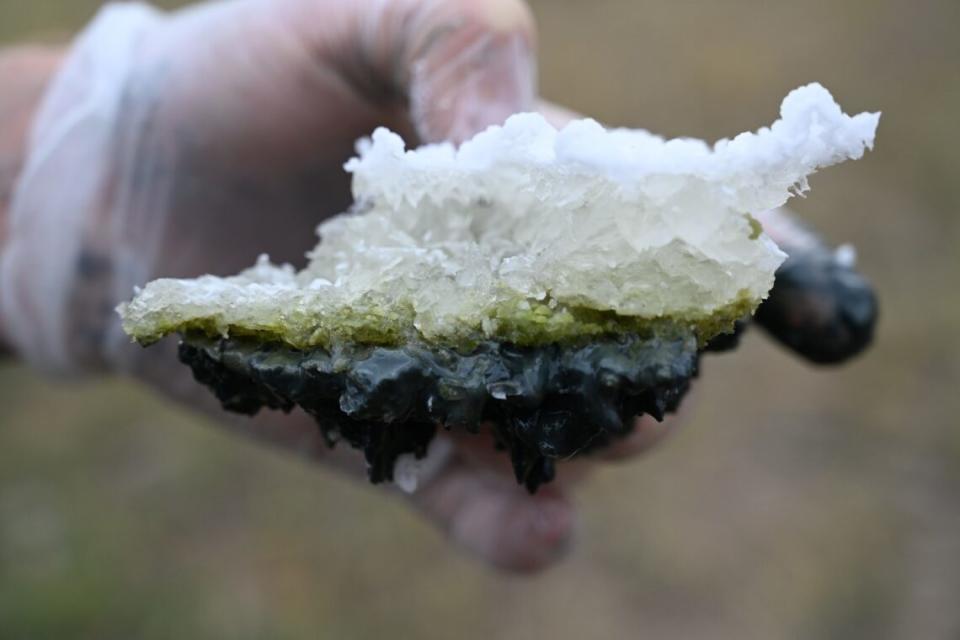Scientists have found a lake that could be a good match for Darwin’s “little hot ponds” where life began on the primordial Earth.
A team of scientists from the University of Washington made the discovery when they discovered a shallow “soda lake” in western Canada that appears to have the chemistry and conditions that a small body of water would need for the spontaneous synthesis of complex molecules. to facilitate. led to the emergence of life on Earth about 4 billion years ago.
Soda lakes like the one in this research are small bodies of water that have high levels of dissolved carbonates and sodium, similar to dumping large amounts of baking soda into them. In this case, however, the high levels of dissolved sodium and carbonate are caused by reactions between water and volcanic rocks.
The findings could help solve a long-standing problem in explaining how life evolved on Earth and could also be applied to other planets in the solar system, such as Mars and Venus .
Related: Life beyond Earth could form in the coldest depths of space, Ryugu asteroid samples reveal
Since the 1950s, researchers have been able to create biological molecules such as amino acids and the building blocks of RNA from inorganic molecules, but the next step in this process has long been problematic. RNA and DNA, the main molecules of life, as well as the membranes of living cells, need the backbone of naturally occurring molecules of the element phosphorus, called phosphates.
The concentration of phosphates required to form biomolecules in the laboratory is up to a million times higher than the levels normally found in rivers, lakes or oceans. This is called the “phosphate problem” in theories about the emergence of life on Earth, and this new research suggests that soda lakes may be the solution.
“I think these soda lakes provide an answer to the phosphate problem,” senior research author and University of Washington professor of Earth and space sciences David Catling said in a statement. “Our answer is optimistic: This environment should have occurred on early Earth, and probably on other planets, because it is just a natural result of the way planetary surfaces are made and the way water chemistry works .”
Why are soda lakes a potential cradle for life
In addition to high levels of dissolved carbonates and sodium, soda lakes also contain large amounts of phosphates, and a 2019 study showed that the concentration of these molecules in these small bodies of water can be up to 1 million times greater than found in in typical bodies of. water. This means that soda lakes could be ideal locations for the key molecules of life to emerge.
To test this, the University of Washington set out to examine such a soda lake, settling on Last Chance Lake, a 1-foot-deep (30 cm) murky lake found at the end of a dirt road on the Cariboo Plateau in British Columbia. Columbia. , Canada. This particular soda lake was determined to have the highest known level of phosphate in the 1990s.

Not only does Last Chance Lake have volcanic basalt rock at its base, but it also has a dry, windy climate that keeps water levels low and condenses dissolved compounds by rapidly evaporating incoming water.
The scientists behind this new research visited the lake three times between 2021 and 2022, in summer and when it was frozen in winter.
“You have this flat, dry salt, but there are nooks and crannies. And between the salt and the sediment, there are little pockets of water that are really high in dissolved phosphate,” said team member and University of Washington postdoctoral researcher Sebastian Haas. “What we wanted to understand was why and when this could happen on the ancient Earth, to provide a cradle for the origin of life.”
After examining the water samples, lake sediment and salt crust found in Last Chance Lake to understand the lake’s chemistry, the team discovered that calcium combined with abundant carbonate and magnesium to form dolomite.
This is different to the situation in other lakes where phosphate usually binds with calcium to form calcium phosphate, which makes up the enamel on our teeth and is insoluble, depleting phosphate levels.
As a result of calcium being locked in dolomite in Last Chance Lake, plenty of free phosphates remain; if these conditions were found in water pools around 4 billion years ago, this would allow the main ingredients for the origin of life chemistry to exist in the necessary high concentrations.
RELATED STORIES
— Life may have been possible exactly seconds after the Big Bang
— Perhaps life as we know it has its roots in an ancient cold cosmic cloud
— It might be easier to detect alien life if we are looking for ‘Jurassic life.’ Here’s why
Not only did the team conclude that Last Chance Lake suggests that soda lakes are strong candidates for sites where life may have begun on Earth, but they expect the conditions of these lakes to be common to other bodies. of the solar system and throughout planets outside the solar system, extrasolar planets, or exoplanets.
“We studied a natural environment that should be common throughout the solar system,” Haas said. “Volcanic rocks are common on planetary surfaces, so this same water chemistry could have occurred not only on early Earth, but also on early Mars and early Venus if liquid water was present.”
“These new findings will help inform origin-of-life researchers who are mimicking these reactions in the laboratory or looking for potentially habitable environments on other planets,” Catling said.
The team’s research is published in the journal Nature Communications Earth & Environment.